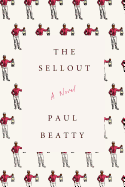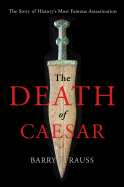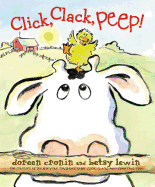
| Publisher: | Farrar, Straus & Giroux | |
| Genre: | General, Fiction, Literary, African American | |
| ISBN: | 9780374260507 | |
| Pub Date: | March 2015 | |
| Price: | $26 |
| Starred | Fiction |
by Paul Beatty
Paul Beatty tramples the stereotypes and accepted sociology of American black males with dazzlingly smart fiction. The protagonists of his first two novels, White Boy Shuffle and Slumberland, are well-read and well-schooled in street vernacular and hip music, with a sardonic skepticism about what it means to be a black man in the modern world. The Sellout takes this same mix to the next level; it's an over-the-top fable of a young black man with the street name Bonbon who farms an urban tract in the once-rural (fictional) town of Dickens in South Los Angeles.
Bonbon was raised by an academic sociologist with a penchant for using his son for behavioral experiments. When his father is accidentally shot by the LAPD, Bonbon receives a $2 million wrongful death settlement and, as he says, "He and I bought the farm on the same day." With his new wealth and land, Bonbon develops his farm in the tradition of George Washington Carver, finding his own peanut "in the plant life that had the most cultural relevance to me--watermelon and weed."
Beatty is funny as hell and offers a serious consideration of race through a relentless parade of stereotypes. The satire isn't limited to blacks--he also skewers whites, Mexicans, celebrities, Africans, even autistic kids. Behind all the humor, however, Beatty asks important questions about racism and identity. The Sellout is a knock-out punch to everything all races smugly accept as our appropriate roles in a diverse world. It's always more complicated than we think. --Bruce Jacobs, founding partner, Watermark Books & Cafe, Wichita, Kan.

| Publisher: | Knopf | |
| Genre: | General, Fiction, Fantasy, Action & Adventure, Historical, Literary | |
| ISBN: | 9780307271037 | |
| Pub Date: | March 2015 | |
| Price: | $26.95 |
| Fiction |
by Kazuo Ishiguro
The decade-long wait for a new novel from Kazuo Ishiguro (Never Let Me Go) ends with a dark and elegant allegory that shows the author at the top of his game.
In an England that still remembers King Arthur and yet shelters pixies, ogres and dragons, an elderly married couple decide to make the journey to their son's village. Axl and Beatrice are not sure they remember the correct route, and they cannot recall why they have not visited sooner, or even exactly what their son looks like. However, they are certain that their failing memories are not symptoms of age and senility. Beatrice thinks that the constant mist hanging over their land may somehow affect the minds of those who inhabit it. Their journey becomes more dangerous than anticipated when they visit a village from which ogres stole a young boy. Although a fearsome Saxon warrior named Wistan rescues the boy, his people believe the child is tainted by the ogres' evil and will not accept him. Axl and Beatrice agree to travel with the warrior and child for a time, but Wistan's hidden agenda and Beatrice's determination to regain their memories pull them into a dangerous adventure they never imagined.
Shades of Tolkien and T.H. White enliven Ishiguro's exploration of the role memory plays in human lives and relationships and whether or not freedom lies in forgetting. Ishiguro's use of fantasy elements plays perfectly with his usual subtlety and bittersweet musings on human nature, and this quest for the truth will spur readers to think deeply about the impressions our pasts leave on our futures. --Jaclyn Fulwood, blogger at Infinite Reads

| Publisher: | Random House | |
| Genre: | Fiction, Contemporary Women, Family Life | |
| ISBN: | 9780812996678 | |
| Pub Date: | March 2015 | |
| Price: | $25 |
| Fiction |
by Rachel Joyce
Rachel Joyce's The Unlikely Pilgrimage of Harold Fry won many fans with its bumbling but likable protagonist and his improbable journey across England and through his own troubled life. Harold appears off-screen in The Love Song of Miss Queenie Hennessey, in which Queenie replies to the postcards he sent her in Pilgrimage. Readers will be delighted to revisit the action of the first book from a different perspective and with considerable added detail on Queenie's side. Readers might want to start with Pilgrimage, as Love Song comprises one big spoiler; however, the second novel is enjoyable on its own.
Love Song begins when Queenie receives Harold's first postcard. She has written to him from hospice care, sharing the news of her impending death. Harold sets out to visit, asking her to await his arrival. Queenie is startled and alarmed. She has kept an old secret from Harold that she had intended to take with her; she now decides she needs to come clean.
Joyce alternates among three timelines: in real time, as Queenie waits for Harold while composing a long letter of explanation; their separation 20 years ago, when she fled life's complications; and their original meeting and developing friendship. While the present-day setting is inarguably dour, the action in all three stories is fresh, compelling and deeply emotional, and Queenie's fellow residents create a charming little world of their own. Just as in Pilgrimage, a major revelation at the end amplifies the impact of an already powerful book. --Julia Jenkins, librarian and blogger at pagesofjulia

| Publisher: | Hawthorne Books | |
| Genre: | Fiction, Coming of Age, Literary | |
| ISBN: | 9780990437000 | |
| Pub Date: | March 2015 | |
| Price: | $18.95 |
| Fiction |
by Megan Kruse
In her debut novel, Call Me Home, Megan Kruse undertakes sprawling topics including guilt, sex, domestic violence and the complicated love of siblings, parents, children and lovers. These ambitious themes and clearly wrought characters are gorgeously rendered in feeling prose.
Amy moved from small-town Texas to small-town Washington State as an 18-year-old newlywed, before her husband began to beat her. The action of Call Me Home begins years later, alternately told in the third-person perspectives of Amy and her son, Jackson, and in first person by Jackson's little sister, Lydia. Amy tries to leave with her children, repeatedly, but to escape her abusive husband permanently she has to choose just one child to save--Lydia. Thus 18-year-old Jackson finds himself on the streets of Portland, Ore., before taking work on a construction crew in Idaho. Amy and Lydia hide out at a shelter in New Mexico, then find their way to Amy's hometown, where 13-year-old Lydia meets her grandmother for the first time. Flashbacks throughout the narrative also portray Amy's marriage and abuse and the children's early lives.
Call Me Home offers lovely descriptions of natural settings in Washington, Idaho and Texas, but central are the powerful themes and ugly realities of domestic violence, Jackson's challenges as a gay teen, and the shared traumas of Amy, Lydia and Jackson. Kruse's evocative, often lyrical language serves her subjects well, so that what results is not unleavened pain but painful beauty, even hope. --Julia Jenkins, librarian and blogger at pagesofjulia

| Publisher: | Simon & Schuster | |
| Genre: | General, Fiction, Mystery & Detective, Thrillers | |
| ISBN: | 9781451694147 | |
| Pub Date: | March 2015 | |
| Price: | $25.99 |
| Mystery & Thriller |
by Ian Caldwell
Ten years ago, Ian Caldwell and Dustin Thomason wrote the mega bestseller The Rule of Four, a suspenseful tale about a group of Princeton roommates who solve a mystery hidden in an arcane Renaissance text. Caldwell is now back (sans Thomason) with The Fifth Gospel, a sparkling worth-the-wait religious thriller about family, the Shroud of Turin, a lost gospel, two brothers (Vatican priests serving during the end of Pope John Paul II's reign) and a murder.
Like The Name of the Rose, whose story took place in the confines of a monastery, this story is set within the 110 acres of Vatican City. The narrator is Father Alex Andreou, a widowed Eastern Catholic priest whose young son, Peter, lives with him in their small Vatican apartment. His brother, Simon, serves as a Roman Catholic diplomat-priest. The two hope that new archival research discovered by scholar Ugo Nogara--to be revealed at an exhibit in the Vatican--might make reconciliation between the two churches possible. Nogara's research concerns the Shroud's authenticity and the discovery of a fifth gospel, the Diatessaron. But all seems lost when Nogara is found murdered, and Father Alex, whose apartment is broken into the next day, becomes a suspect.
Caldwell creates a captivating stage for detective-priest Andreou to solve the crime while attempting to prove his innocence. Although it's slow to start, the novel soon punches all the right twisty buttons to lead readers on a fascinating and compelling religious adventure. --Tom Lavoie, former publisher

| Publisher: | Minotaur Books | |
| Genre: | Espionage, General, Suspense, Fiction, Thrillers, Literary | |
| ISBN: | 9781250045423 | |
| Pub Date: | March 2015 | |
| Price: | $23.99 |
| Mystery & Thriller |
by Olen Steinhauer
Henry, a CIA spy, sends an e-mail to his former colleague and lover, Celia, asking her to dinner in Carmel, Calif., where she moved after she left their station in Vienna--and the spook business--to marry and start a family. The two drink wine, reminisce about old times and discuss Celia's children.
So begins Olen Steinhauer's All the Old Knives, but it soon becomes clear Henry isn't making a social call. He wants information from Celia regarding a hostage incident six years earlier at the Vienna airport, which ended with more than a hundred people dead. She tells him what she remembers, after warning him she might get details wrong since she has completely abandoned her former life.
The story shifts back and forth in time, between the dinner and the days surrounding the hostage situation, as well as between Henry's and Celia's points of view. The reader becomes a fly on the wall, wondering who's playing whom and which one, if either, will walk away unscathed.
Though the story unfolds mostly during one dinner conversation, an air of suspense hums throughout because neither spy can be trusted. What will Henry do to Celia after she answers his questions? Is she really as out of the game as she lets on? The truth--and readers' alliances--remain fluid, constantly changing depending on who's telling the story. For a couple of spies, Henry and Celia are a bit slow to recognize some obvious tells, but Knives itself is still a sharp psychological thriller. --Elyse Dinh-McCrillis, blogger at Pop Culture Nerd

| Publisher: | Minotaur Books | |
| Genre: | Fiction, Mystery & Detective, Historical, Women Sleuths | |
| ISBN: | 9781250052025 | |
| Pub Date: | March 2015 | |
| Price: | $25.99 |
| Mystery & Thriller |
by Rhys Bowen
The Edge of Dreams continues the adventures of Molly Murphy Sullivan, star of 13 previous historical mysteries by Rhys Bowen. Molly's husband, Daniel, a captain in the New York City police force, has surprised her by rebuilding their home (which was destroyed in a bomb blast in City of Darkness and Light) while she was in Europe for the summer.
But Molly's domestic bliss is abruptly shattered when she and her baby son, Liam, are in a terrible train accident. Worse, a cryptic letter seems to imply that Molly and Liam were the targets of a serial murderer who has been making Daniel Sullivan's life miserable. Although Daniel wants Molly to stay out of trouble and focus on redecorating their house, the intrepid former private investigator can't stay out of such an intriguing case, despite her injuries. Why does the killer send notes bragging about his deeds to the police, when he could have gotten away with many of the murders undetected? His victims include a simple-minded spinster, a butcher, a banker and a judge. Do they have anything in common?
With the help of her neighbors, who are committed suffragettes and amateur "alienists" (psychologists), Molly delves deep into the mind of the killer. Bringing turn-of-the-century New York to life, and providing a fascinating glimpse into the work of early psychologists, Rhys Bowen has created a deliciously atmospheric tale that fans of Jacqueline Winspear and Charles Todd are sure to appreciate. The Edge of Dreams is a lovely historical mystery with a charming and redoubtable heroine. --Jessica Howard, blogger at Quirky Bookworm

| Publisher: | Crown | |
| Genre: | Transportation, History, Military, Naval, Ships & Shipbuilding, World War I | |
| ISBN: | 9780307408860 | |
| Pub Date: | March 2015 | |
| Price: | $28 |
| Nonfiction |
by Erik Larson
In May of 1915, a torpedo fired from a German submarine struck the RMS Lusitania, a British passenger ship with nearly 200 Americans aboard. She sunk off the coast of Ireland in less than 20 minutes (due to a sequence of events unforeseen even by its attacker), killing 1,200 passengers and crew, fully half of whose remains were never recovered. Common knowledge has it that this event drove the United States to enter a European war that would become World War I, but, in fact, while the Lusitania's fate played some role in that decision, it took two full years and the secret German Zimmerman telegram for the U.S. to enter the war in 1917.
Erik Larson examines this extended U.S. isolationism, the final days aboard the Lusitania, and related events and characters in Dead Wake: The Last Crossing of the Lusitania. As in his earlier books (Isaac's Storm; In the Garden of Beasts), Larson presents exhaustive research with precision and accuracy, in extraordinarily compelling prose. Dead Wake is a masterpiece of gripping narrative nonfiction, arguably the most riveting of Larson's works.
Nearly 2,000 people boarded the Lusitania in New York City, bound for Liverpool, including 1,300 passengers, of whom 189 were Americans. An unusually large proportion were children and babies. The Lusitania was the biggest and fastest civilian ship on the seas in that 10th month of European war. These superlatives--plus the reassurances of the captain, William Thomas Turner, and the Liverpool-based Cunard Line--allowed the ship to confidently set sail despite a German warning published in all the New York papers on the morning of the Lusitania's departure, that "vessels flying the flag of Great Britain, or of any of her allies, are liable to destruction." Larson provides detail and humanity by profiling several passengers and crew members, including a Vanderbilt heir; a psychic; and a Boston bookseller who boarded with a small but invaluable collection of William Makepeace Thackeray's original illustrations and Charles Dickens's own copy of A Christmas Carol, complete with the author's marginalia.
Just weeks earlier, another vessel had departed from the other side of the Atlantic Ocean. German Unterseeboot-20 was captained by Walther Schwieger, a well-regarded young Kapitänleutnant known for his aggressive and innovative tactics. Because submarines lost radio contact with their bases almost immediately upon departure and remained out of contact for much of their cruise, Schwieger was in full charge of his boat, empowered to cruise, dive and attack on his own, with the full support of his government. In following Schwieger's submarine in the weeks leading up to the climax, Larson gives the story dimension; far from presenting the German captain as a monster, he is humanized, for example, by the devotion of the men who worked under him, and the presence on board of a litter of puppies rescued, interestingly, from another ship sunk by torpedo.
As he builds toward the inevitable intersection of U-20 with the Lusitania, Larson introduces more characters. Captain Turner of the Cunard Line had decades of experience at sea, and had just testified in a civil case against the owners of the Titanic on behalf of the families of deceased passengers. He was known to his men as a brave and capable but old-fashioned captain, with "one foot on the deck of a sailing ship." U.S. President Woodrow Wilson had had a rough year, even without the European conflict: having lost his wife Ellen in late 1914, his mourning left him unmoored and struggling to concentrate, until he met widow Edith Bolling Galt. His love for her would prove overwhelming, and their courtship strained--she rejected his first marriage proposal. This love story is affecting, and if it serves as a distraction from the sinking ship at the center of this book, that is a fine style choice by Larson: it was a distraction for Wilson, too.
Meanwhile, a secret section of the British Admiralty was tasked with intercepting and decoding German wireless messages, a purpose known to only nine senior officials, who were hampered in using any information gained for fear of having its cryptanalysis ability revealed. They would therefore fail to warn Turner of U-20's preying presence in the waters he sailed. Such parallel plots and individual profiles add color and depth to Larson's account, as when the chief of British naval intelligence is described as "part Machiavelli, part schoolboy."
The Lusitania's story is in itself moving, and carries great historical significance, but these events positively glitter with life in Larson's engaging, quick-paced and captivating prose. Though it incorporates well-documented history, Dead Wake still contains elements of suspense for all but the most expert readers; as Larson acknowledges, he had his own misconceptions coming into this project, and learned surprising facts in his research, as readers surely will. The pages fly by as such details are revealed and the action ratchets up toward a climactic event that we all see coming, but that still makes us catch our breath. In spellbinding, immediate language, Larson contrasts the "books, and cigars, and fine foods, afternoon tea, and the easy cadence of shipboard life" on the Lusitania with the "U-boat sweat," foul odors and close air aboard U-20. His enthralling description of passengers joking about submarines and torpedoes, in the very moments before the torpedo strike, and "making polite apologies" just after, in the scramble for life jackets, keep the reader fully engaged. Appealingly, in his "Note to Readers" and "Sources and Acknowledgments," Larson writes in a more personal voice about the joy of the research process, and about his frank difficulty in understanding the passengers who boarded the Lusitania in the face of warnings from Germany about travel in a war zone.
Dead Wake is both a thoroughly satisfying read, and an unparalleled adventure into world history. Larson's fans will rejoice, and grow in number. --Julia Jenkins

| Publisher: | She Writes Press | |
| Genre: | Travel, Personal Finance, Humor, Mexico, Form, History, Biography & Autobiography, Essays, Latin America, Retirement Planning, Business & Economics, Personal Memoirs | |
| ISBN: | 9781631529627 | |
| Pub Date: | March 2015 | |
| Price: | $16.95 |
| Biography & Memoir |
by Carol M. Merchasin
Since 2006, Carol Merchasin and her husband have made their home in the town of San Miguel de Allende, in the central part of Mexico. They moved from Philadelphia despite drug wars that plagued their new country and the concerns of their family and friends. As Merchasin writes, "We wanted a fresh perspective, to be engaged by life somewhere other than in a shopping mall or a traffic jam, to smell sunshine and grilling meat on the street. All of that--and Internet access."
In This Is Mexico: Tales of Culture and Other Complications, Merchasin explores what it means to live as an American, with American attitudes toward work, family, money and food, in another country, where such concepts are often vastly different than she expected. In these essays, she shows how she and her husband had to adapt gradually to their surroundings rather than force their will on it.
Writing with honesty and a bit of humor, Merchasin admits her limited grasp of Spanish hindered her at times from understanding the multiple levels of complexity that comprise a culture with "a long thread connecting the present to a colonial past." Despite this, she does learn nuances for greeting total strangers on the street; the devotion Mexicans have to their telenovelas; and the difficulties of being ill abroad. Sprinkled with Spanish terms and the sort of details one notices only by actually living in an unfamiliar country, Merchasin's narratives offer readers a delightful glimpse into a way of life that is readily accessible to those willing to venture south of the U.S. border. --Lee E. Cart, freelance writer and book reviewer

| Publisher: | Simon & Schuster | |
| Genre: | Ancient, History, Rome | |
| ISBN: | 9781451668797 | |
| Pub Date: | March 2015 | |
| Price: | $27 |
| Starred | History |
by Barry Strauss
With his usual vigor, Barry Strauss (The Spartacus War) recounts the events leading to the assassination of Julius Caesar in 44 BCE, on the Ides of March (the date on the Roman calendar that corresponds to March 15). Having achieved preeminence in Rome after long military campaigns against both foreigners and fellow citizens, Caesar became dictator for life. Shortly thereafter, he was killed by the elite of Rome, who included many of his own friends as well as those he had recently elevated to important positions: "Conqueror, creator and dictator, Caesar was great but at least in the last stages of his career, not wise."
The Death of Caesar: The Story of History's Most Famous Assassination explores possible motivations for each of the chief conspirators and the blunders they made following the Ides. Strauss also seeks to establish the primary importance of Decimus Brutus (not to be confused with the more famous Marcus Junius Brutus) to the plot. Though ancient sources and scholarly records are mixed on the role of Decimus, the author makes a compelling case for his status as Caesar's closest confidant among all the assassins, and the man with the most military power and experience necessary to help the conspirators survive the reaction to their deed. Mark Antony also gets a more positive appraisal than he has in recent scholarship.
Due to the dearth of sources, Strauss relies on lively speculation and imagination in a way that some readers might find excessive, but the opinions are informed and well defended, if debatable, and each key player comes alive. --Evan M. Anderson, collection development librarian, Kirkendall Public Library, Ankeny, Iowa

| Publisher: | Bloomsbury | |
| Genre: | Art, General, History, Individual Artists | |
| ISBN: | 9781620400944 | |
| Pub Date: | March 2015 | |
| Price: | $28 |
| Art & Photography |
by Roger White
Roger White, a painter and cofounder of the art journal Paper Monument, is well positioned to tackle the contemporary art world in "all of its exhilarating, self-contradictory sprawl." The six chapters of The Contemporaries "echo, amplify, and argue with one another." As a result, we're given an articulate and smart take on the recent history of art-making and a glimpse at where it might take us.
White notes that around the turn of the millennium, contemporary art was exploding in all kinds of directions, only to fall into hard times a few years later. To learn more, he goes to the prestigious Rhode Island School of Design; to New York, where he visits studio artists who work hard to produce a "master's" work; and to Milwaukee, Wis., where he investigates the "politics of localism in contemporary art" in an environment far more affordable than the major art cities.
White then focuses on three artists: Dana Schutz's work addresses the question of how painting, the most traditional of artistic media, can "represent current events in the age of digital communication." White calls Mary Walling Blackburn's work "uncategorizable," comprising performance, video, sculpture and dance. White ends with Stephen Kaltenbach, a conceptual artist known for his "time capsules," who left the art world in 1970 to teach.
Love it or not, much of contemporary art is in the eye of the beholder--what you bring to it is what you leave with. White's honest, unflinching portrait of this scene, arguments and all, will help inquiring minds trying to decide if it's for them. --Tom Lavoie, former publisher

| Publisher: | HarperCollins | |
| Genre: | Mysteries, Espionage, & Detective Stories, Family, Juvenile Fiction, Siblings, Thrillers & Suspense | |
| ISBN: | 9780062224101 | |
| Pub Date: | March 2015 | |
| Price: | $18.99 |
| Starred | Children's & Young Adult |
by Lauren Oliver
Sisterhood and family take central focus in Vanishing Girls, the newest from Lauren Oliver (Delirium; Before I Fall).
Dara and Nick are only 11 months apart and have always been close, in spite of their differences. Dara, the beautiful, free-spirited troublemaker, knows reliable big sister Nick will always cover for her. When a car accident leaves Dara scarred and Nick (at the wheel) with no memory of the accident, the girls' lives spiral in different directions. Dara becomes a recluse, seldom leaving the house and avoiding Nick at all costs. Nick is desperate to reconcile with Dara, but when Dara becomes the second girl to disappear in their town, Nick fears the two cases may be related and that time may be running out. Alternating between Nick's narrative and Dara's diary, Oliver teases out a story of the magnetic pull of family and the choices we make to protect the ones we love.
Lauren Oliver's dramatic mystery is a departure from her earlier novels in that family is the resounding theme. Nick and Dara's home has begun splintering even before their accident. As their family comes together and undone, the girls grapple with their feelings toward each other and their parents. Further complicating their relationship is their friendship with John Parker, the neighbor boy they've been best friends with since childhood. Oliver tackles an impressive number of issues without falling into melodrama. Teenage drinking abounds, and mild drug use is mentioned, but Oliver uses them well within the plot. --Kyla Paterno, reviewer

| Publisher: | Atheneum/S&S | |
| Genre: | Farm Animals, Animals, New Baby, Holidays & Celebrations, Family, Juvenile Fiction, Easter & Lent | |
| ISBN: | 9781481424110 | |
| Pub Date: | February 2015 | |
| Price: | $17.99 |
| Children's & Young Adult |
by Doreen Cronin, illust. by Betsy Lewin
A truck driver delivers a bow-topped wooden crate to Duck in the opening images. Farmer Brown hears nary a sound: "Everyone was watching the egg." Cronin's clipped rhymes build anticipation ("Not a moo./ Not a click./ Not an oink./ Not a clack"), while Lewin's double-spread portrait of cows, pigs, sheep, mice, chickens, Farmer Brown and Duck shows all of their attention trained on that egg. "Then... a crack." Vignettes of the animals gathering closer to the egg telegraph the passage of time until out comes... "Baby Duck!" The trouble is, Baby Duck won't sleep ("peep peep peep"). Lewin depicts heavy-lidded cows, pigs and chickens as they all try their hooves and wings at lulling Baby Duck to sleep. (The sheep even knit a blanket.) Purple shadows cast over the creatures indicate nightfall, and still the duckling peep peep peeps.
Parents will enjoy Duck's solution as much as young readers will--even though Farmer Brown is once again a bit distressed (Hint: it involves the tractor). A great choice for children with new siblings and for new parents. --Jennifer M. Brown, children's editor, Shelf Awareness